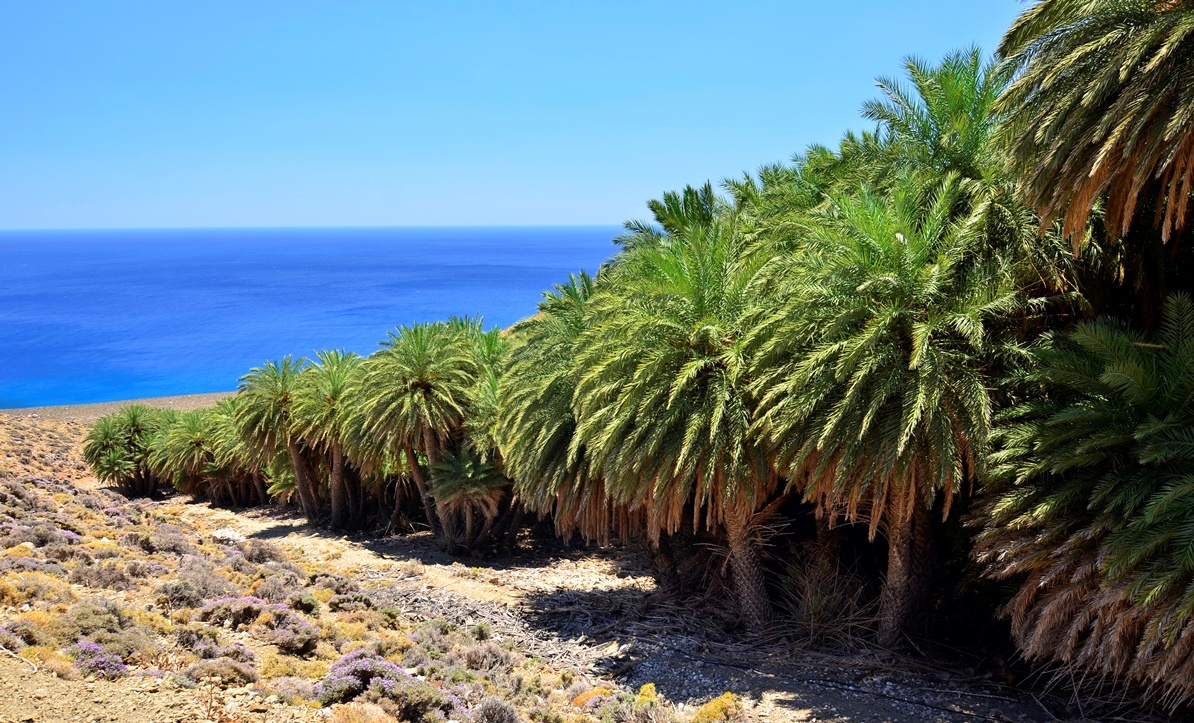
The small palm forest of Saint Antonios is situated next to St. Nikitas Monastery. This oasis stands along a stream which springs from Kefalovrisi, a steady spring of water in the middle of the green belt. The forest is made of palm trees of the Phoenix theophrasti species (Cretan date palm), which can be found in few locations on Crete, and is, therefore, protected by the Forest Service. The forest is enclosed by a fence to prevent goats from grazing there.
The Cretan date palm is a small-sized phoenix tree native to the east Mediterranean, confined to few areas, mainly on Crete and, specifically, Vai (a beach in the Municipality of Lasithi), the Preveli Beach (on the south coast of the Municipality of Rethimno). The Asterousia Mountain Range, where you are, is the only location in Crete where these palms grow away from the sea.
Species biology
This palm grows up to 15 meters high, and usually has very thin branches. The leaves are pinnate, 2-3 meters long and feature multiple, unbending greyish-green linear leaflets, 15-50cm long, on either side of the central stalk. The fruit is an oval yellowish-brown stone fruit, 1.5cm long and 1cm in diameter and contains a single large stone. As a palm tree, it mostly resembles Phoenix dactylifera, known to us as the date palm that grows in the Sahara and Arabian deserts, but is occasionally similar to Phoenix canariensis, with a much more silvery-green leaf colour. This is why there is a hypothesis that Phoenix theophrasti is the ancient ancestor of both species, as it is smaller in size (adult trees only reach 10-15 m) and the flesh of its fruit (the ‘date’) is not worth eating, since it is very thin and fibrous and has an acrid taste; still, the fruit is sometimes eaten by locals.



 Palm forest of Agios Nikitas
Palm forest of Agios Nikitas